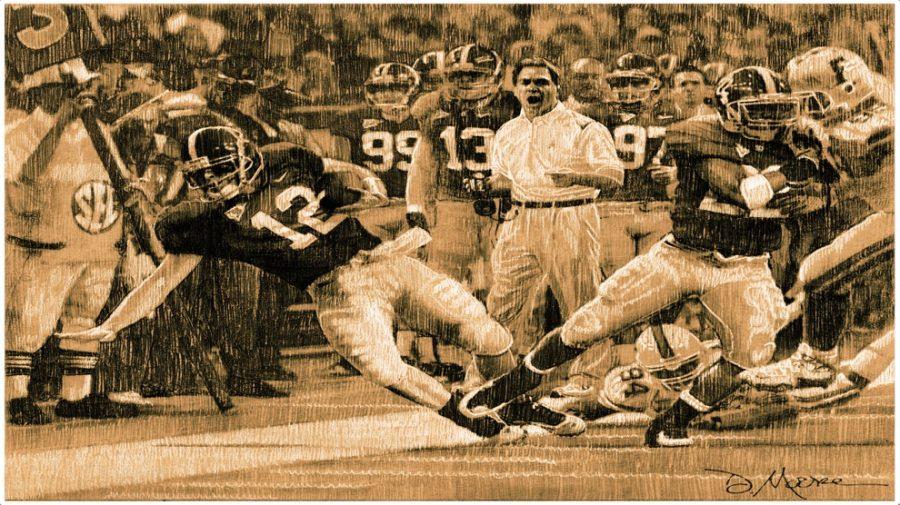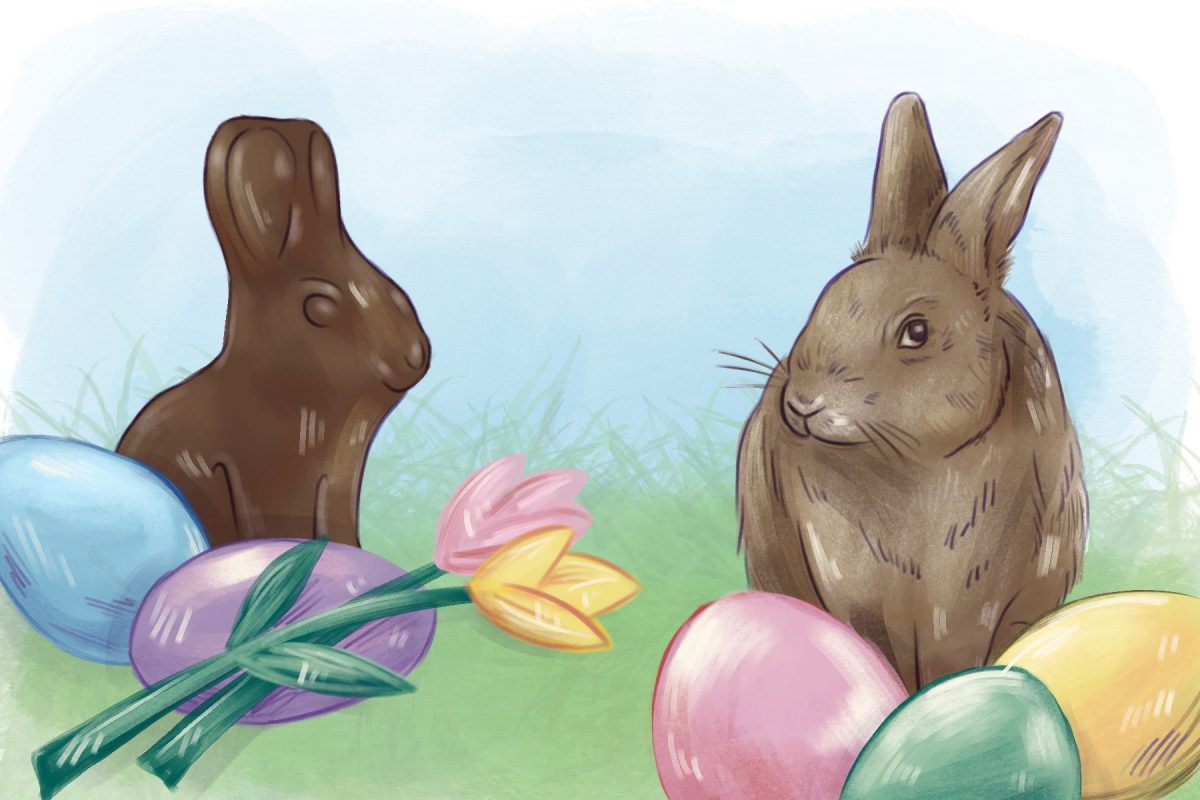Two professional media organizations have come to the aid of artist Daniel Moore in his legal battle with the University of Alabama regarding his paintings of iconic moments in Crimson Tide football history.
The American Society of Media Photographers and the Alabama Press Association filed an amicus curiae (“friend of the court” in Latin) brief Aug. 2 following a joint amicus brief filed by 27 universities that recently sided with the University of Alabama in its formal appeal.
Amicus curiae is a legal concept in which an interested, unsolicited outside party may submit additional information for the sake of clarity in a case, said Elijah Beaver, an attorney who practices in Opelika. Beaver is a 2008 graduate of the University’s School of Law.
“A trial court’s decision is usually only binding on the parties to the case,” Beaver said. “An appellate decision carries more precedential weight and may become binding on all future litigants or potential litigants.”
The universities became interested in the case after a 2009 ruling made by Federal District Judge Robert Propst. The ruling said school colors do not qualify as trademarks or as definitive attributes of the university in question, according to a news release that ran on Monday provided by Moore’s Company, New Life Art, Inc. Propst’s decision ended the trial level of the legal struggle.
The University brought the initial infringement lawsuit against Moore in 2005 for his painting and selling of well-known scenes from Alabama football games, such as Tyrone Prothro’s behind-the-head catch made in the 2005 game against the University of Southern Mississippi.
Propst ruled that Moore was not violating copyright law by reproducing images as art from football games and selling them, but that Moore was infringing on the University’s copyrights by using his images on coffee mugs, shirts and other memorabilia. The University is appealing the first part of Propst’s decision, while Moore is appealing the latter.
The 27 universities siding with UA include every SEC school except Missississppi State and athletic powerhouses such as Duke, Kansas and Forida State. Moore said the schools that joined UA in its appeal have little impact on the case overall.
“The only [reason] that the 27 universities wanted to enter into [the legal battle] with Alabama was they said they think the lower court was wrong about the colors being weak indicators as trademarks,” Moore said. “The school colors are not trademarks, like the script “A,” “UA” and “’Bama.”
The root of the legal struggle, Moore said, is First Amendment rights and the Collegiate Licensing Company, which licenses the University, along with each of the 27 universities that filed the brief.
“The Collegiate Licensing Company is the one that stands to gain the most from a victory for Alabama,” Moore said. “They’re helping to find [other supporting schools] and back the lawsuit because they have a lot to gain; they represent another 160 schools.
“There’s not a First Amendment for artists and there’s not a First Amendment for publishers of books, newspapers or magazines,” he said. “We’re all protected under the same First Amendment. Any attack on the First Amendment, or shrinking of its coverage or power, affects all.”
To the University, however, the lawsuit is not a matter of First Amendment rights. Instead, it’s a matter of protecting itself and its image.
“The University of Alabama believes the court ruled correctly when it found that Daniel Moore and his company have engaged in activities that infringe on the University’s trademarks,” said Deborah Lane, assistant vice president for university relations.
“While we regret the necessity of having to involve the courts in this matter, the lawsuit was necessary since UA must protect the value of our trademarks, name, colors, indicia and logos by defining who uses them, as well as when and how they are used,” she said.
Lane disagreed with Moore’s belief that the Collegiate Licensing Company is at the root of the lawsuit.
“The Collegiate Licensing Company is not a party to the lawsuit or the appeal,” Lane said. “UA is pleased that 27 highly-regarded and nationally-known institutions have joined to support UA in this matter.”
Ward Bedsole, a senior majoring in English, is a self-professed “superfan” and uses the alias “Cap’ Stone” on Game Days while dressed as a UA superhero. Bedsole said he felt the University should leave well enough alone.
“It’s too hard to get endorsement of the University,” Bedsole said. “With Alabama’s fan base and merchandise empire, they can afford to let their loyals capitalize on their love for the Tide.”
The University has worked with other artists in the past using UA trademarks, including Moore, and will continue to do so, Lane said.
For Moore, however, that is not enough.
“If I were to say OK, I’ll license everything, I’ll abrogate my First Amendment rights and do it your way, I wouldn’t be able to do a painting of [Mark] Ingram until after he graduated,” Moore said.
“I would have had to find another job,” he said. “[This is] something that I’ve been doing for 25 years.”










